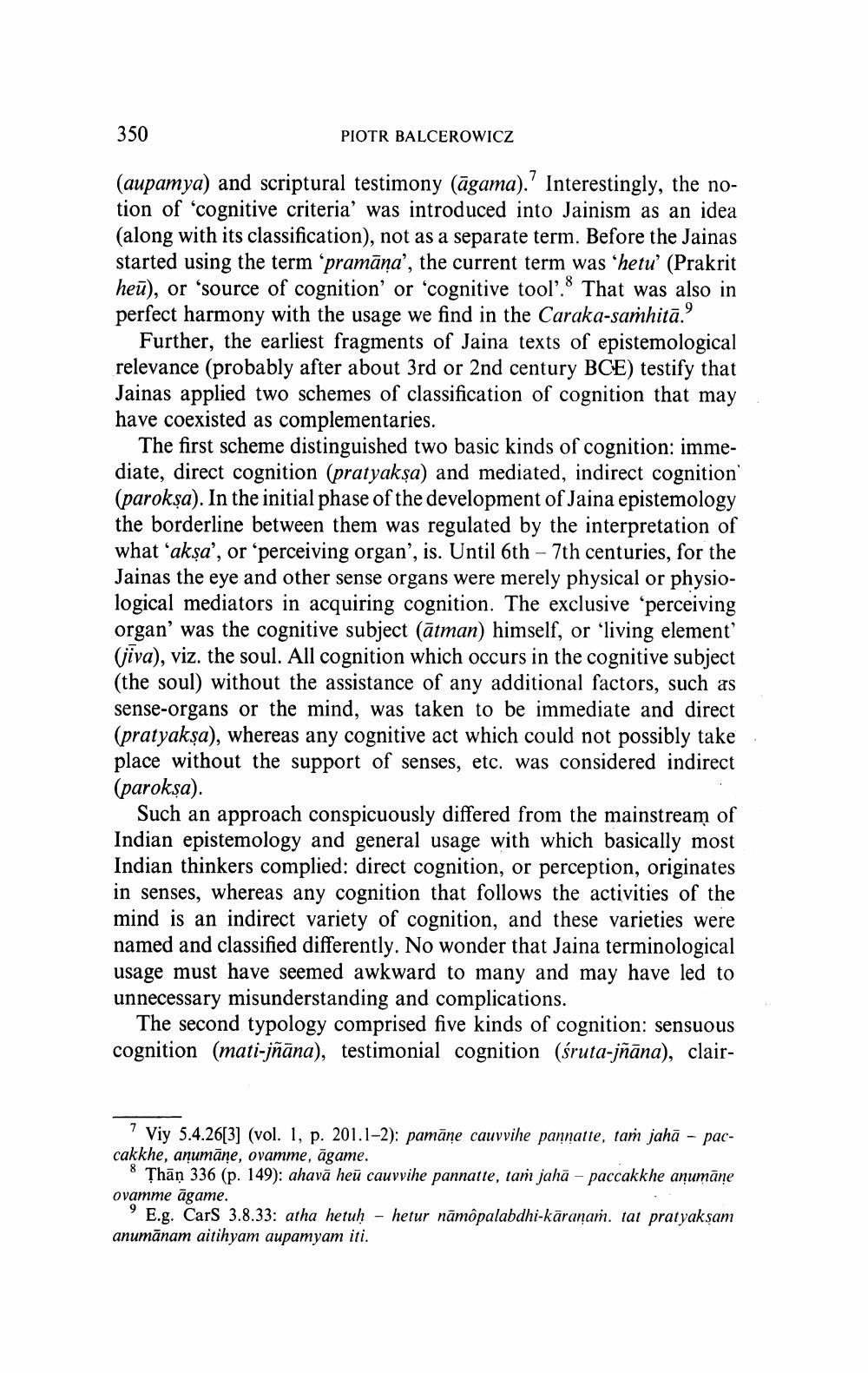Book Title: Pramanas And Language Dispute Between Dinnaga Dharmakirti And Akalanka Author(s): Piotr Balcerowicz Publisher: Piotr Balcerowicz View full book textPage 8
________________ 350 PIOTR BALCEROWICZ (aupamya) and scriptural testimony (āgama).' Interestingly, the notion of cognitive criteria' was introduced into Jainism as an idea (along with its classification), not as a separate term. Before the Jainas started using the term “pramāna', the current term was 'hetu' (Prakrit heū), or ‘source of cognition' or 'cognitive tool. That was also in perfect harmony with the usage we find in the Caraka-saṁhitā. Further, the earliest fragments of Jaina texts of epistemological relevance (probably after about 3rd or 2nd century BCE) testify that Jainas applied two schemes of classification of cognition that may have coexisted as complementaries. The first scheme distinguished two basic kinds of cognition: immediate, direct cognition (pratyakşa) and mediated, indirect cognition (paroksa). In the initial phase of the development of Jaina epistemology the borderline between them was regulated by the interpretation of what ‘aksa', or 'perceiving organ', is. Until 6th - 7th centuries, for the Jainas the eye and other sense organs were merely physical or physiological mediators in acquiring cognition. The exclusive perceiving organ' was the cognitive subject (ātman) himself, or "living element (jiva), viz. the soul. All cognition which occurs in the cognitive subject (the soul) without the assistance of any additional factors, such as sense-organs or the mind, was taken to be immediate and direct (pratyakşa), whereas any cognitive act which could not possibly take place without the support of senses, etc. was considered indirect (paroksa). Such an approach conspicuously differed from the mainstream of Indian epistemology and general usage with which basically most Indian thinkers complied: direct cognition, or perception, originates in senses, whereas any cognition that follows the activities of the mind is an indirect variety of cognition, and these varieties were named and classified differently. No wonder that Jaina terminological usage must have seemed awkward to many and may have led to unnecessary misunderstanding and complications. The second typology comprised five kinds of cognition: sensuous cognition (mati-jñāna), testimonial cognition (śruta-jñāna), clair 7 Viy 5.4.26[3] (vol. 1, p. 201.1-2): pamāne cauvvihe pannatte, tam jahā - paccakkhe, anumāne, ovamme, āgame. 8 Thān 336 (p. 149): ahavā heū cauvvihe pannatte, tam jahā - paccakkhe aņumāne ovamme âgame. 9 E.g. Cars 3.8.33: atha hetuh - hetur nāmôpalabdhi-kāranam. tat pratyakşam anumānam aitihyam aupamyam iti.Page Navigation
1 ... 6 7 8 9 10 11 12 13 14 15 16 17 18 19 20 21 22 23 24 25 26 27 28 29 30 31 32 33 34 35 36 37 38 39 40 41 42 43 44 45 46 47 48 49 50 51 52 53 54 55 56 57 58
